How Trigger Point Therapy Differs From Regular Massage
August 14, 2025
11 min

Understanding the Unique Worlds of Trigger Point Therapy and Regular Massage
When it comes to managing muscular pain and tension, both trigger point therapy and regular massage offer vital benefits but serve very different purposes and utilize contrasting techniques. While regular massage provides broad relaxation and general wellness benefits, trigger point therapy zeroes in on specific muscle knots causing localized and referred pain, delivering targeted relief. This article unpacks the essential differences between these two approaches, diving into their techniques, goals, therapeutic outcomes, and decision-making insights to guide readers in choosing the best muscle pain management option.
Core Differences in Techniques and Methods
What are the core differences in techniques and methods between trigger point therapy and regular massage?
Trigger point therapy is a highly targeted treatment aimed at specific areas in the muscle tissue called trigger points. These are tiny, hyperirritable knots that can cause localized pain and referred discomfort elsewhere in the body. The technique involves applying direct, sustained pressure using fingers, elbows, or specialized tools directly on these trigger points. The goal is to deactivate the knots, improve blood flow, and promote natural healing, often providing quick relief from pain and muscle spasms.
In contrast, regular massage generally involves broader, less focused strokes such as kneading, stroking, and gliding across large muscle groups. Techniques like Swedish massage prioritize relaxation, stress reduction, and increased circulation through lighter, repeated movements. While some deeper massage styles like deep tissue massage also target specific muscles, the primary aim in regular massage is overall comfort and improved mobility, rather than directly addressing tight knots.
Myofascial release massage therapy differs further by focusing on the fascia — the connective tissue surrounding muscles — rather than just the muscles themselves. It uses gentle, sustained pressure to soften restrictions in fascia, enhancing flexibility and movement.
The main distinction between trigger point therapy and these broader massage methods lies in their approach:
- Trigger point therapy targets specific, painful spots with direct pressure to break up muscle knots.
- Regular massage offers a more generalized technique aimed at relaxing muscles and reducing tension over larger areas.
- Myofascial release emphasizes releasing restrictions in connective tissue, which can support long-term improvements in mobility.
Understanding these differences allows clients and therapists to select the most effective approach, whether they require localized pain relief or broader relaxation and mobility enhancement.
Focus Areas: Targeting Muscle Knots versus General Muscle Groups
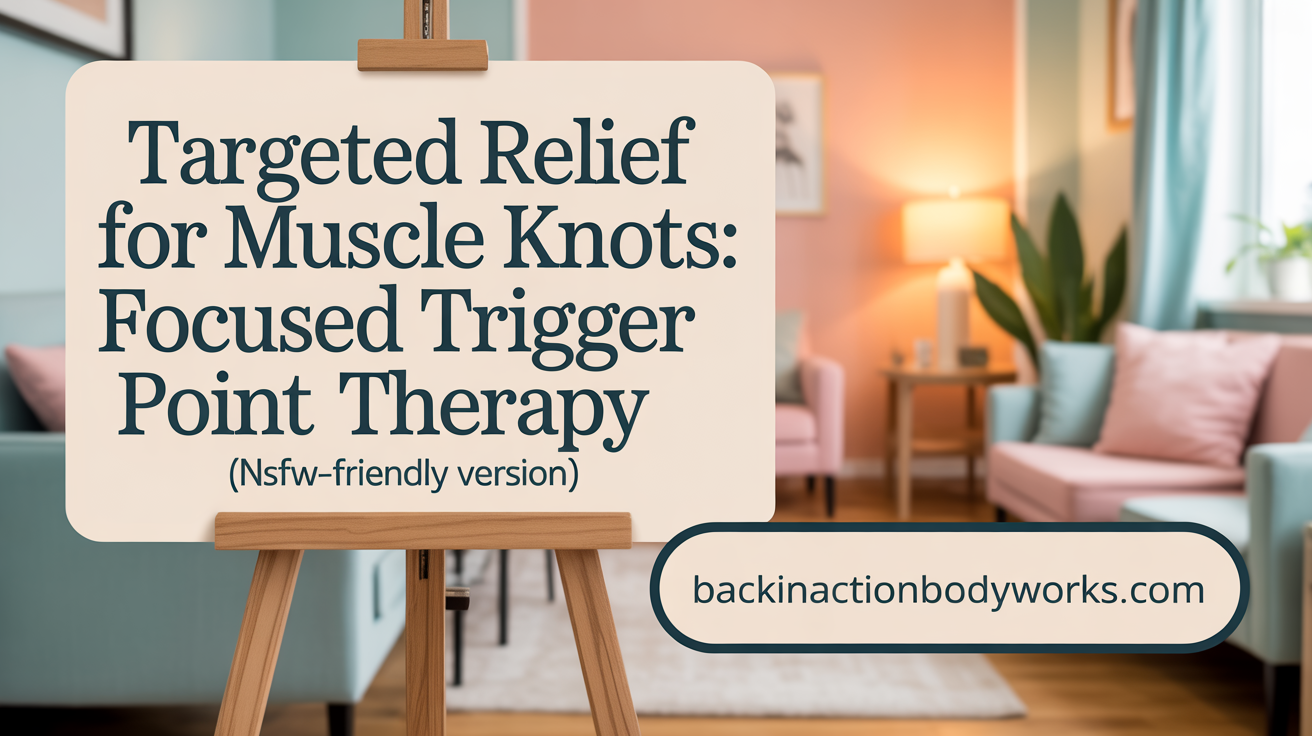 Trigger point therapy and general massage techniques differ significantly in their focus and goals, influencing how each approach addresses muscle pain and movement issues.
Trigger point therapy and general massage techniques differ significantly in their focus and goals, influencing how each approach addresses muscle pain and movement issues.
Trigger point therapy specifically targets hyperirritable spots in muscle tissues called trigger points. These tiny knots or dense areas of muscle fibers can cause localized pain and referred pain, where discomfort radiates to other parts of the body. The technique involves applying sustained, direct pressure to deactivate these trigger points. This targeted approach helps break up muscle knots rapidly, providing immediate relief from tightness and pain.
On the other hand, broader massage techniques like Swedish or deep tissue massage focus on larger muscle groups and the surrounding connective tissues. These methods involve kneading, stroking, and gliding motions designed to relax muscles, improve circulation, and enhance overall relaxation. While they may address general muscle tension and improve flexibility, they are not as focused on specific problem spots.
Both therapies involve working with fascia—the connective tissue surrounding muscles—which plays a role in each treatment type. Trigger point therapy may include some fascial manipulation to release tightness, but its primary aim is deactivating trigger points. Myofascial release, a related technique, uses gentle traction and sustained pressure on fascial restrictions to improve movement and reduce pain over larger areas.
Understanding these focus differences helps clients and therapists choose the most appropriate treatment. Trigger point therapy is ideal for those experiencing localized pain or muscle knots, often related to overuse or trauma. General massage provides overall relaxation and stress relief, beneficial for overall wellness.
In summary, trigger point therapy’s targeted focus on specific knots contrasts with the holistic, widespread approach of general massage. Both aim to improve musculoskeletal health, but their techniques and goals are tailored to different types of discomfort and treatment outcomes.
How Trigger Point Therapy Works to Provide Pain Relief
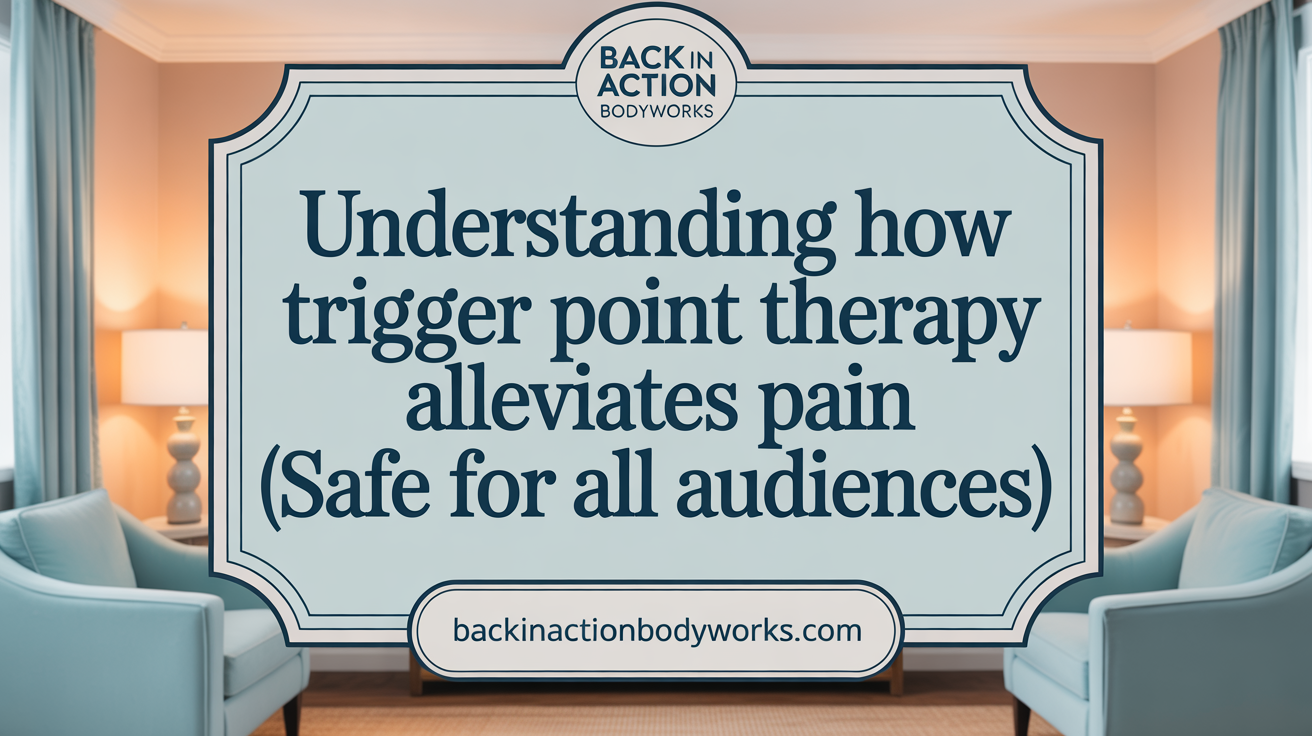
Physiological basis of trigger points
Trigger points are localized hyperirritable spots within taut bands of skeletal muscle fibers. These points are often the result of muscle overload, injury, or repetitive stress, leading to abnormal biochemical activity. When a trigger point forms, it is characterized by reduced blood flow (ischemia), an excess release of neurotransmitters like acetylcholine, and the accumulation of pain-causing substances such as bradykinin, substance P, and cytokines. This biochemical imbalance causes continuous muscle contraction, creating a painful knot that can irritate nearby tissues.
Mechanism of localized and referred pain
Trigger points generate both local and referred pain. Locally, they produce tenderness and stiffness. Referred pain occurs when these points irritate surrounding tissues or nerve endings, leading to pain perceived in distant areas. For example, a trigger point in the neck may cause headaches, while one in the lower back might radiate pain into the hips or legs.
Therapeutic techniques like pressure and dry needling
Trigger point therapy employs various methods to deactivate these knots. Manual pressure, sustained for 30 to 90 seconds, helps to relax the muscle fibers and improve blood flow. Techniques such as digital compression, pistoning, or using tools like massage balls can target trigger points effectively.
Dry needling is another popular method, involving inserting thin needles directly into the trigger points. This procedure causes a local twitch response, which helps to break the cycle of muscle contraction and relieve tenderness. Both techniques aim to restore normal muscle function and decrease pain.
Neurophysiological effects leading to muscle relaxation and healing
Stimulating trigger points triggers neurophysiological responses that promote muscle relaxation. The physical pressure or needling stimulates sensory nerves, which send signals to the spinal cord to inhibit pain transmission, thereby reducing perceived pain.
Additionally, it encourages the release of endorphins and other pain-relieving neuropeptides. These chemical mediators decrease peripheral and central sensitization, a process that amplifies pain signals. The increased blood flow flushes out inflammatory mediators, rich in biochemical substances that sustain pain, facilitating healing.
By disrupting the biochemical and neurophysiological cycle of muscle hyperactivity, trigger point therapy helps release muscle knots, reduce pain, and restore normal function. Over time, this targeted approach can lead to lasting relief, improved flexibility, and better overall muscle health.
Comparing Trigger Point Therapy with Deep Tissue Massage
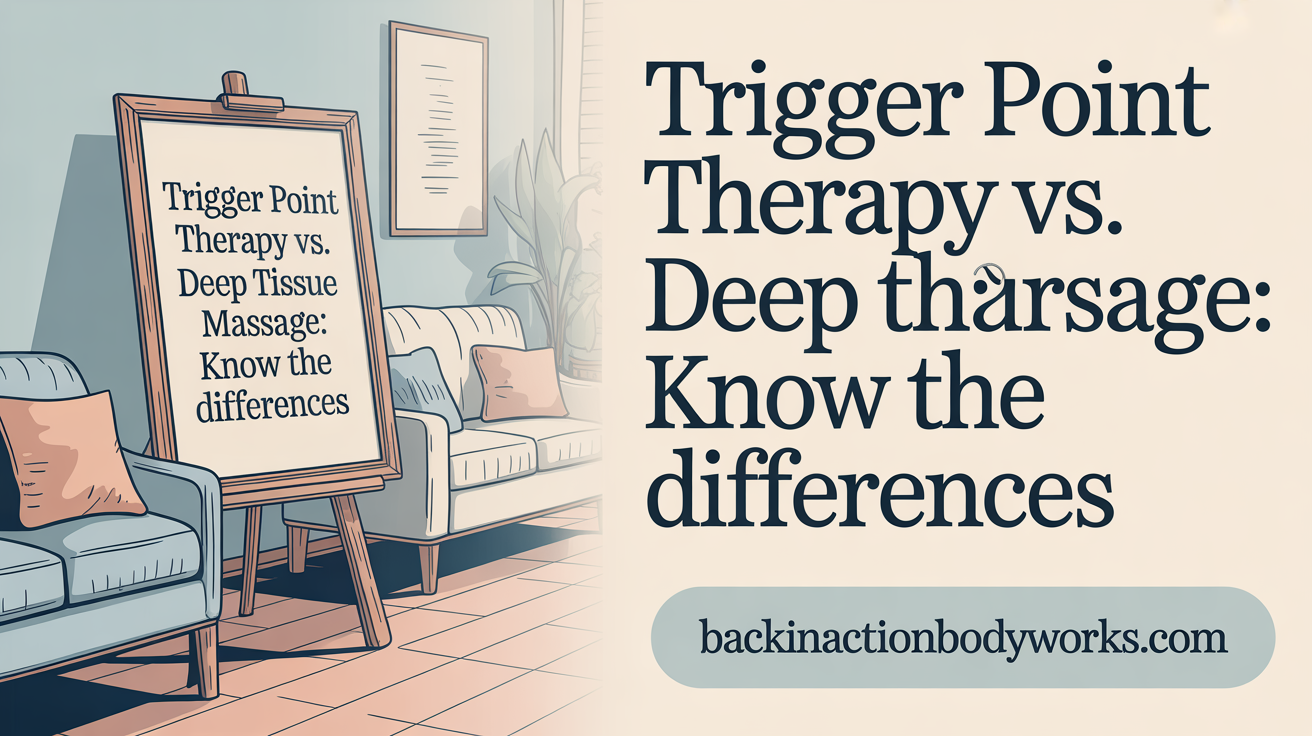
What are the differences between trigger point therapy and deep tissue massage in terms of methods, goals, and effectiveness?
Deep tissue massage is a technique that involves slow, deliberate strokes combined with firm pressure to reach the deeper layers of muscle and fascia. Its primary goals are to alleviate chronic muscle pain, promote better circulation, and relax tense tissues. Sessions are often longer, allowing therapists to work on large muscle groups thoroughly. This method is beneficial for overall muscle tension, sports injuries, and long-term discomfort.
Trigger point therapy, on the other hand, is focused on pinpointing and releasing specific hyper-irritable spots in muscle tissue called trigger points or knots. It involves applying sustained, direct pressure directly to these spots using fingers, elbows, or specialized tools. The main aim is to deactivate trigger points that cause localized pain and referred pain in other body areas, providing targeted relief. Sessions are usually shorter and more focused, honing in on particular trouble spots.
While both techniques seek to reduce pain and enhance muscle relaxation, their approaches differ significantly. Deep tissue massage addresses broader muscle groups and aims for overall tension reduction. Trigger point therapy concentrates on small, specific areas for precise pain relief. The effectiveness of each depends on individual circumstances; deep tissue massage is often preferred for chronic, widespread issues, whereas trigger point therapy is highly effective for isolated knots and acute pain.
Both therapies can be combined effectively. Using trigger point therapy to release tight spots before a deep tissue massage can enhance overall results, providing both immediate localized relief and improved general muscle flexibility. Selecting the right approach depends on the nature of discomfort, personal health condition, and therapeutic goals.
Unique Benefits and Therapeutic Outcomes of Trigger Point Therapy

What benefits and therapeutic outcomes are unique to trigger point therapy compared to regular massage?
Trigger point therapy provides targeted relief by focusing specifically on tiny, hyper-sensitive knots in muscles called trigger points. These knots often cause pain, tenderness, and referred discomfort in other parts of the body.
Unlike regular massage, which mainly aims to promote relaxation and reduce overall muscle tension, trigger point therapy directly applies focused, sustained pressure to deactivate these trigger points. This targeted approach improves blood circulation within the affected area, facilitating faster healing and reducing muscle spasms effectively.
Moreover, trigger point therapy can lead to immediate improvements in mobility by breaking down adhesions and releasing muscle tightness in specific areas. This makes it especially useful for conditions like chronic muscle pain, tension headaches, or localized soreness.
When combined with other massage techniques, trigger point therapy can enhance the overall therapeutic outcome, yielding longer-lasting relief and better function compared to simple relaxation massages. Ultimately, it is a more precise method that addresses the root causes of certain pains and muscle restrictions, offering faster and more effective results.
Role of Neuromuscular and Myofascial Release Techniques in Trigger Point Therapy
What role do neuromuscular and myofascial release techniques play in trigger point therapy?
Neuromuscular techniques are fundamental in trigger point therapy as they directly target muscle tightness and pain by applying firm, often sustained pressure to deactivate hyperirritable spots called trigger points. These points are tiny, sensitive knots within muscle fibers, which can cause localized pain and referred discomfort in other body areas. By focusing on these trigger points, neuromuscular methods help release muscle tension, increase blood flow, and promote muscle relaxation, leading to improved movement and reduced pain.
Myofascial release complements this by addressing the fascia—the connective tissue that surrounds and supports muscles. Sometimes, restrictions or adhesions in fascia contribute to muscle tightness and pain. Gentle, sustained pressure with myofascial release techniques helps loosen this tissue, restoring its elasticity and reducing restrictions that impair movement.
Integrating these approaches creates a comprehensive treatment plan. While trigger point therapy quickly relieves localized muscle knots and alleviates pain, myofascial release enhances tissue flexibility and long-term relief by freeing fascial restrictions.
Effects on muscle and fascial tissues
The combined use of neuromuscular and myofascial release techniques results in significant improvements in both muscle and fascial health. Trigger point therapy frees muscles from knots, enhancing blood circulation and reducing spasms. Meanwhile, myofascial release addresses tight or restricted fascia, which can encapsulate muscles and limit their function.
These therapies not only alleviate pain but also improve overall tissue health by encouraging proper alignment and mobility. As restrictions diminish, clients often experience increased range of motion and better posture.
Overall enhancement of pain relief and mobility
The synergy of neuromuscular and myofascial techniques provides a holistic effect, promoting both pain relief and functional movement. By simultaneously releasing muscle knots and fascial restrictions, these methods offer lasting benefits. Patients often notice quicker recovery from injuries, less muscle tension, and improved physical performance.
This integrated approach also supports better stress management and relaxation, contributing to overall well-being. The combined techniques are particularly effective for chronic pain conditions, where both muscular and fascial factors play a role, leading to more comprehensive and lasting improvements.
Making the Choice: When to Consider Trigger Point Therapy or Regular Massage
 When choosing between trigger point therapy and regular massage for muscle pain, various factors influence the most suitable approach.
When choosing between trigger point therapy and regular massage for muscle pain, various factors influence the most suitable approach.
Factors influencing treatment selection include the type, location, and severity of discomfort, as well as personal health goals. For localized issues like muscle knots, trigger point therapy offers highly targeted relief. This technique focuses on applying direct pressure to deactivate hyperirritable spots that can cause both localized and referred pain. Conversely, general massage—such as Swedish or deep tissue—aims to relax the overall musculature, improve circulation, and reduce stress.
Nature and location of pain greatly determine the choice. Trigger point therapy is ideal for chronic, pinpoint pain often associated with conditions like myofascial pain syndrome. It works best when pain is specific, persistent, and caused by tight knots. Regular massage can handle more diffuse tension, ideal for relaxation, stress reduction, and improving overall mobility.
Therapeutic goals also guide decision-making. If the goal is targeted relief from tight, painful spots, trigger point therapy is effective due to its focus on specific trigger points. If the client seeks relaxation, stress alleviation, and temporary muscle tension release, regular massage techniques may suffice. Deep tissue massage bridges both worlds, targeting deeper layers of muscle and providing long-lasting relief for chronic tension.
Benefits of combining therapies and professional guidance cannot be overstated. Many clients benefit from sessions that blend trigger point therapy to address specific pain with general massage for relaxation. Consulting licensed therapists or healthcare providers ensures treatments are tailored to individual needs and safely administered.
Potential risks and precautions of trigger point therapy include soreness, discomfort, rare nerve or tissue damage, and possible adverse reactions like bruising or infections, especially if invasive techniques such as injections are used. These risks highlight the importance of having trained, qualified practitioners perform the therapy.
| Aspect | Trigger Point Therapy | Regular Massage | Deep Tissue Massage |
|---|---|---|---|
| Focus | Specific trigger points and knots | Overall muscle relaxation and tension release | Deeper layers and chronic pain relief |
| Typical session length | Shorter, focused sessions | Longer, more relaxing sessions | Similar to deep tissue, focuses on deep muscles |
| Techniques used | Focused pressure, injections, dry needling | Kneading, stroking, gliding | Firm pressure, slow strokes |
| Ideal for | Localized, chronic pain, muscle knots | Stress, general tension, relaxation | Persistent muscle tightness and injury |
| Risks | soreness, nerve injury, rare adverse events | Generally safe, minimal risks | Slight discomfort, based on individual response |
Knowing the differences helps clients and therapists choose the right treatment. Trigger point therapy is preferred for specific, chronic issues involving muscle knots and referential pain. Regular massage offers broad benefits for relaxation and overall wellbeing. Combining both treatments under guidance can often produce the best results for musculoskeletal health and pain relief.
Choosing the Right Approach for Muscle Pain Relief
Selecting between trigger point therapy and regular massage hinges on understanding one’s specific pain patterns, therapeutic goals, and comfort with the intensity of treatment. Trigger point therapy offers a precise, targeted approach to dissolve muscle knots and relieve localized pain using firm pressure and specialized techniques. In contrast, regular massage focuses on promoting general relaxation, improving circulation, and easing broad muscle tension through softer, flowing movements. Combining aspects of both can provide comprehensive care for muscle health. Consulting qualified therapists and considering personal needs can ensure effective pain management and improved mobility, ultimately leading to enhanced well-being.
References
- Differences between Trigger Point and Myofascial Release ...
- Deep Tissue Massage vs Trigger Point Therapy: Which is Right for ...
- Deep Tissue Massage vs. Trigger Point Therapy: Which One is Right ...
- Trigger Point Therapy vs. Massage Therapy: What's the Difference?
- For Relief, Pull the Trigger on a Trigger Point Massage
- Complete Guide to Trigger Point Therapy - EG Healthcare
- Trigger Point Therapy vs. Myofascial Release - Zeel
- Massage Therapy for Trigger Points: What Physical Therapists Want ...
- Understanding Neuromuscular vs. Traditional Massage Techniques
- Myofascial Release Therapy - Cleveland Clinic
Recent articles
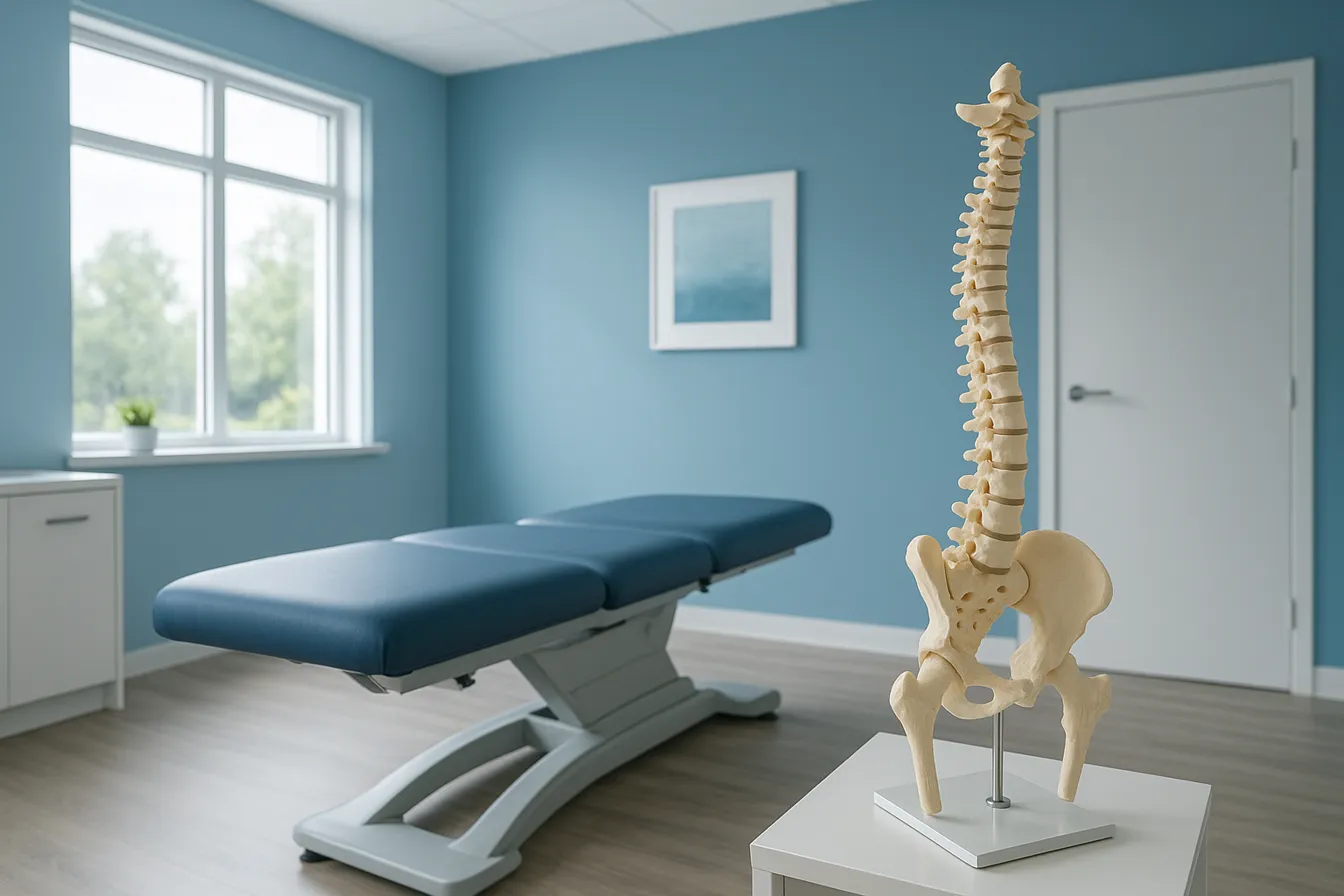
Chiropractic Care: Key Benefits for Managing and Preventing Back Pain
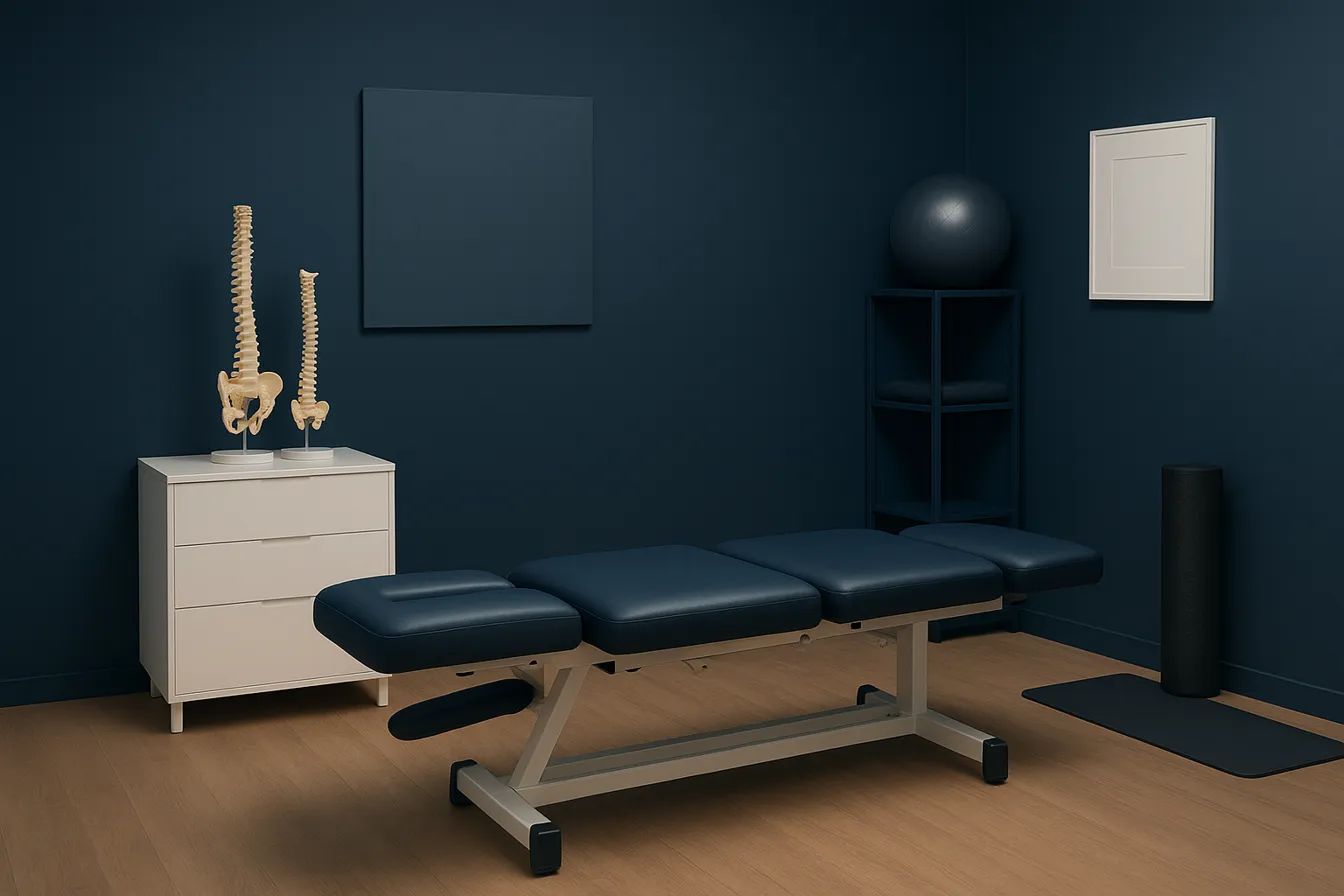
Corrective Exercises That Support Long-Term Relief from Sciatica
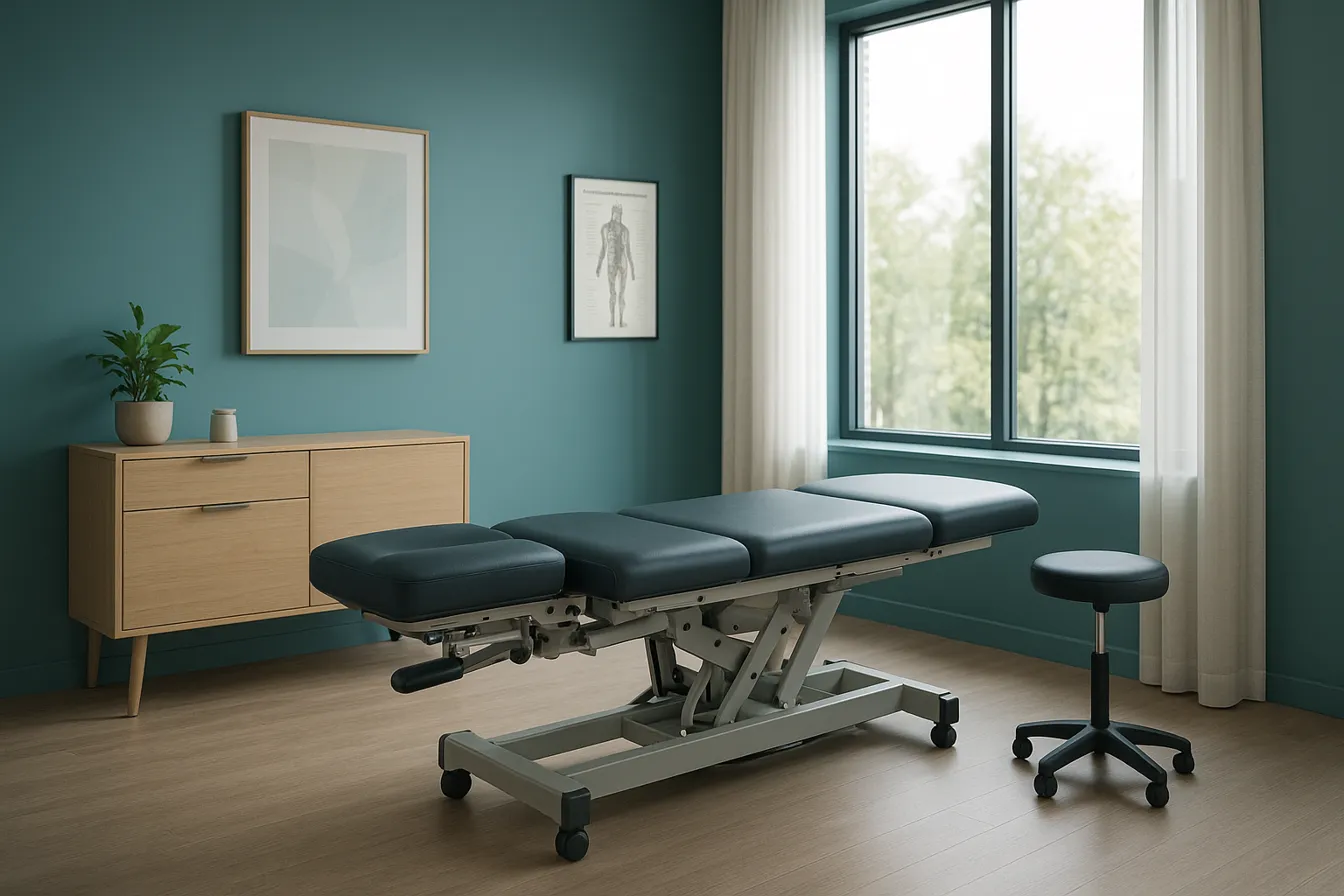
Chiropractic Methods That Provide Lasting Relief from Back Pain
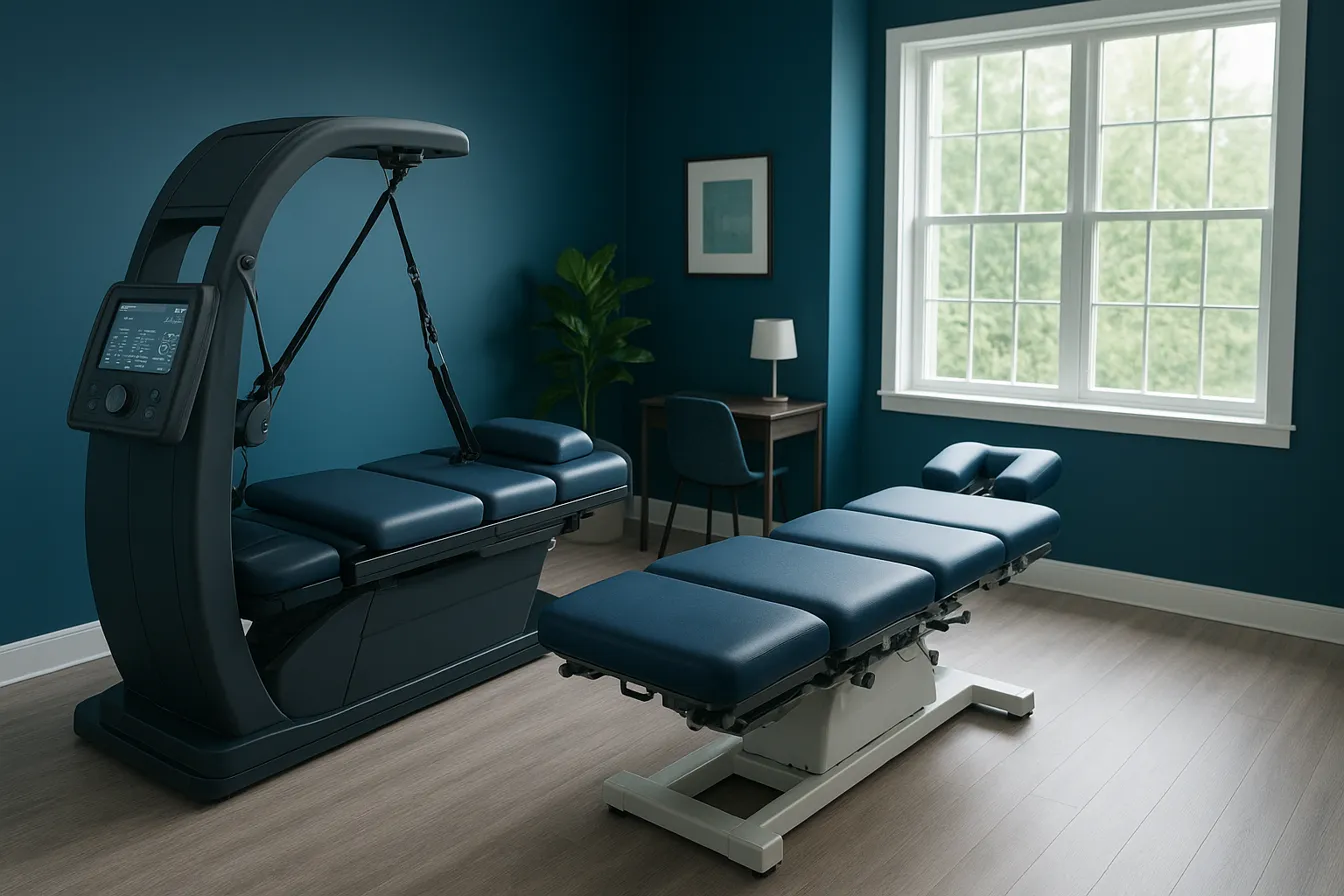
Understanding Spinal Decompression and Its Benefits for Sciatica

Real Patient Testimonials: Success Stories in Chiropractic Care

Top Questions to Ask Your Chiropractor During Your Initial Visit

Physiotherapy's Role in Supporting Chiropractic Treatment Plans

The Role of Diet and Nutrition in Enhancing Wellness and Chiropractic Care

Inspiring Patient Testimonials Highlighting Chiropractic Success

Chiropractic Care: A Natural Solution for Back Pain Relief

Amazing Patient Success Stories in Chiropractic Wellness

Combining Physiotherapy and Chiropractic for Optimal Healing

Spinal Decompression Therapy: A Breakthrough for Sciatica Sufferers

5 Holistic Treatments That Complement Chiropractic Care

How Physiotherapy Supports and Enhances Chiropractic Treatment

Root Cause Versus Symptom Treatment: Making the Right Choice

7 Essential Things to Know Before Choosing Your Chiropractor

Why Addressing Root Causes of Pain Matters More Than Just Symptoms

Nutritional Counseling Strategies to Boost Your Overall Wellness

How Spinal Decompression Therapy Alleviates Sciatic Nerve Pain

Long-Term Pain Relief Through Targeted Corrective Exercises

10 Benefits of Integrating Physiotherapy with Chiropractic Treatments

Corrective Exercises That Help Prevent Recurring Pain

8 Corrective Exercises Proven for Lasting Pain Relief

Lifestyle Habits for Maintaining a Healthy Spine

What You Will Experience at Your Initial Chiropractic Visit

What Happens at Your First Visit to a Chiropractor?

Focusing on Root Cause Analysis for Effective Pain Relief
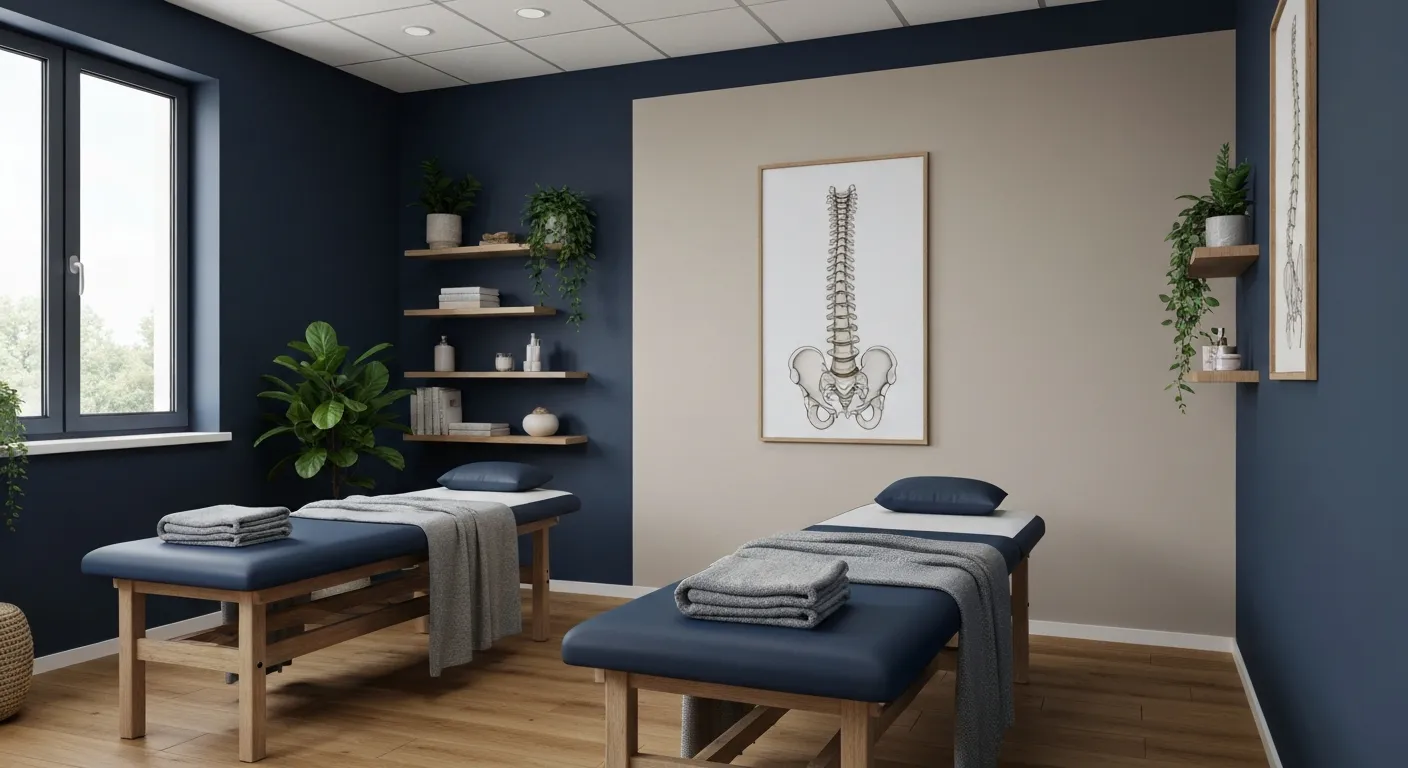
Tips for Lifestyle Changes to Support Spinal Health

Tips for Lifestyle Changes to Support Spinal Health

Holistic Treatment Plans: Alternatives to Surgery for Chronic Pain

Enhance Wellness Through Personalized Nutritional Counseling

Non-Invasive Pain Relief: Exploring Holistic Treatment Alternatives

Sciatica Relief Through Targeted Spinal Decompression

Integrating Physiotherapy with Chiropractic Treatments for Better Results

Testimonials That Demonstrate the Benefits of Chiropractic Care

The Power of Corrective Exercises in Pain Management

A Step-by-Step Guide to Your Initial Chiropractic Consultation

9 Nutritional Tips to Enhance Your Chiropractic Wellness Journey

Patient Experiences: How Chiropractic Care Changed Their Lives

Lifestyle Recommendations to Keep Your Spine in Top Shape

Effective Corrective Exercises for Long-Term Pain Relief

Back Pain Benefits: What Chiropractic Care Can Do for You

Spinal Decompression Techniques for Effective Sciatica Relief

Top Nutritional Counseling Tips for Enhanced Wellness

6 Lifestyle Habits That Boost Spine Health Daily

Discover Holistic and Non-Surgical Pain Relief Solutions

Exploring Holistic and Non-Surgical Treatment Options for Pain
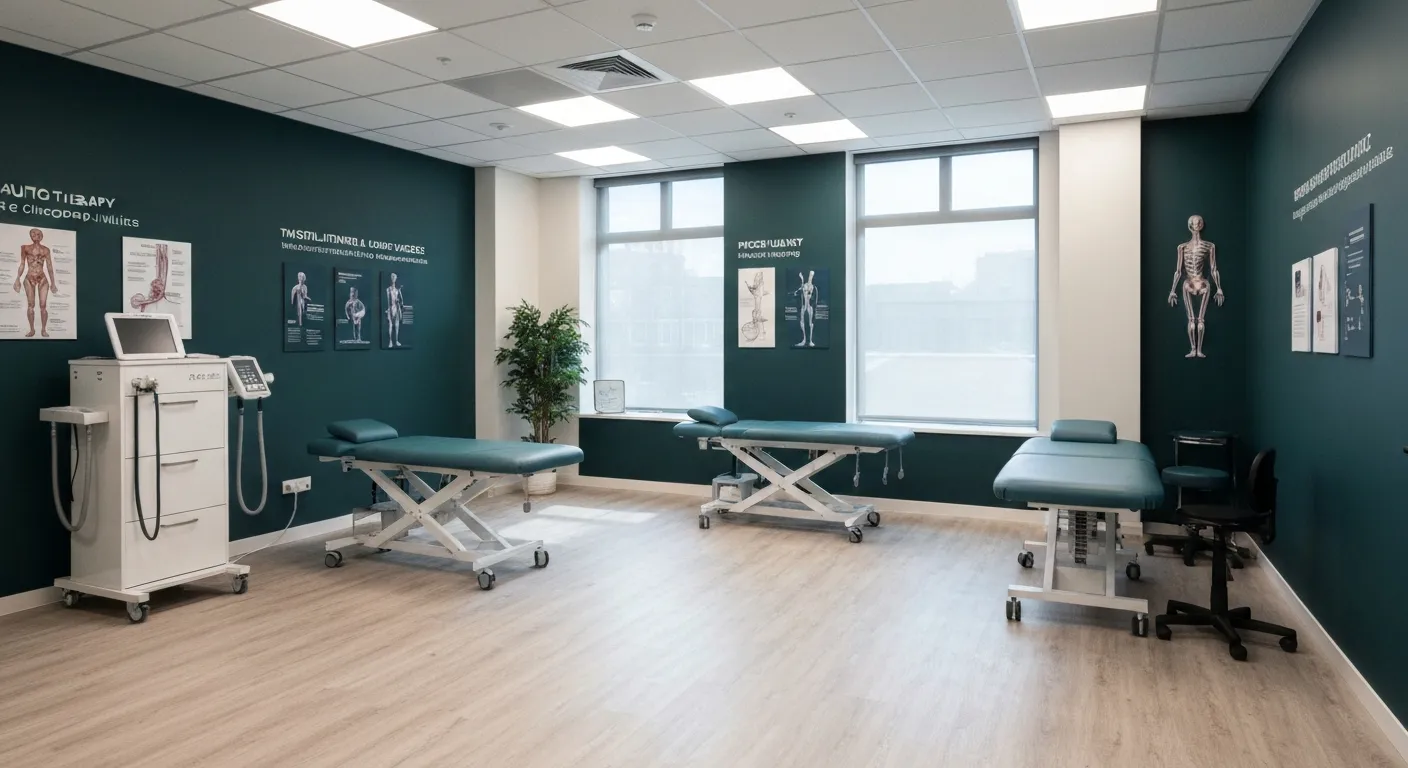
The Role of Physiotherapy in Enhancing Chiropractic Care Outcomes

Complementing Chiropractic Care with Physiotherapy: What You Need to Know

What to Expect During Your First Chiropractic Visit

Simple Lifestyle Adjustments to Maintain a Healthy Spine

Personalized Nutritional Counseling for Improved Health Outcomes

Exploring Non-Surgical Treatments for Spine-Related Conditions

An Introduction to Spinal Decompression for Sciatica Patients
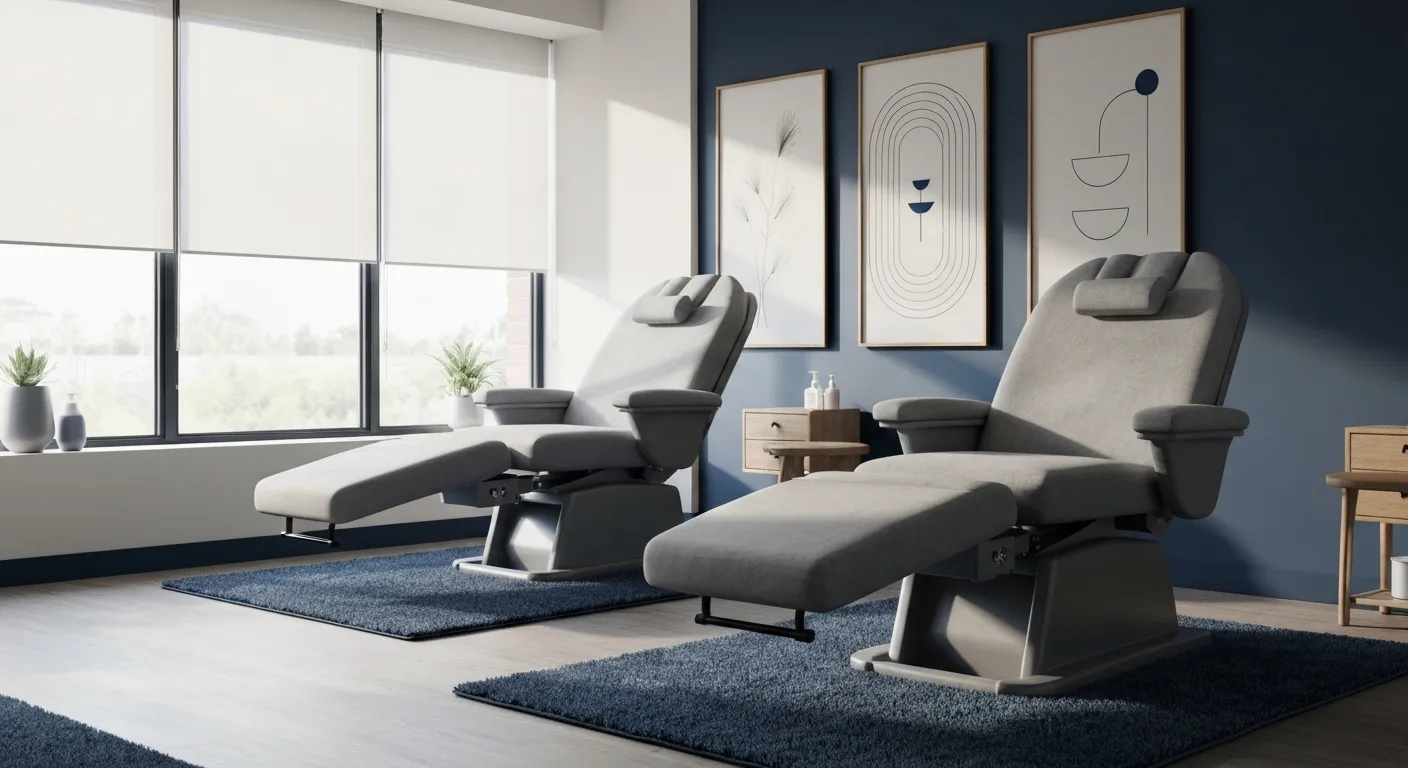
Transformative Success Stories: Patient Experiences with Chiropractic Treatments

Why Chiropractic Care Is Essential for Back Pain Relief

Addressing Underlying Causes Versus Symptom Management in Pain Care

The Role of Nutrition in Enhancing Chiropractic Treatment Effectiveness

Sciatica Treatment Options: Is Spinal Decompression Right for You?

Lifestyle Tips to Maintain a Healthy Spine and Prevent Back Issues

The Synergy Between Physiotherapy and Chiropractic Treatments

What Happens During Your Initial Chiropractic Consultation

Effective Corrective Exercises for Sustainable Pain Management

Taking a Root Cause Approach to Chronic Pain Management

Holistic Pain Management Techniques Without Surgery

How Patient Success Stories Validate Chiropractic Care Benefits

Spinal Decompression: Innovative Treatment for Sciatic Nerve Pain
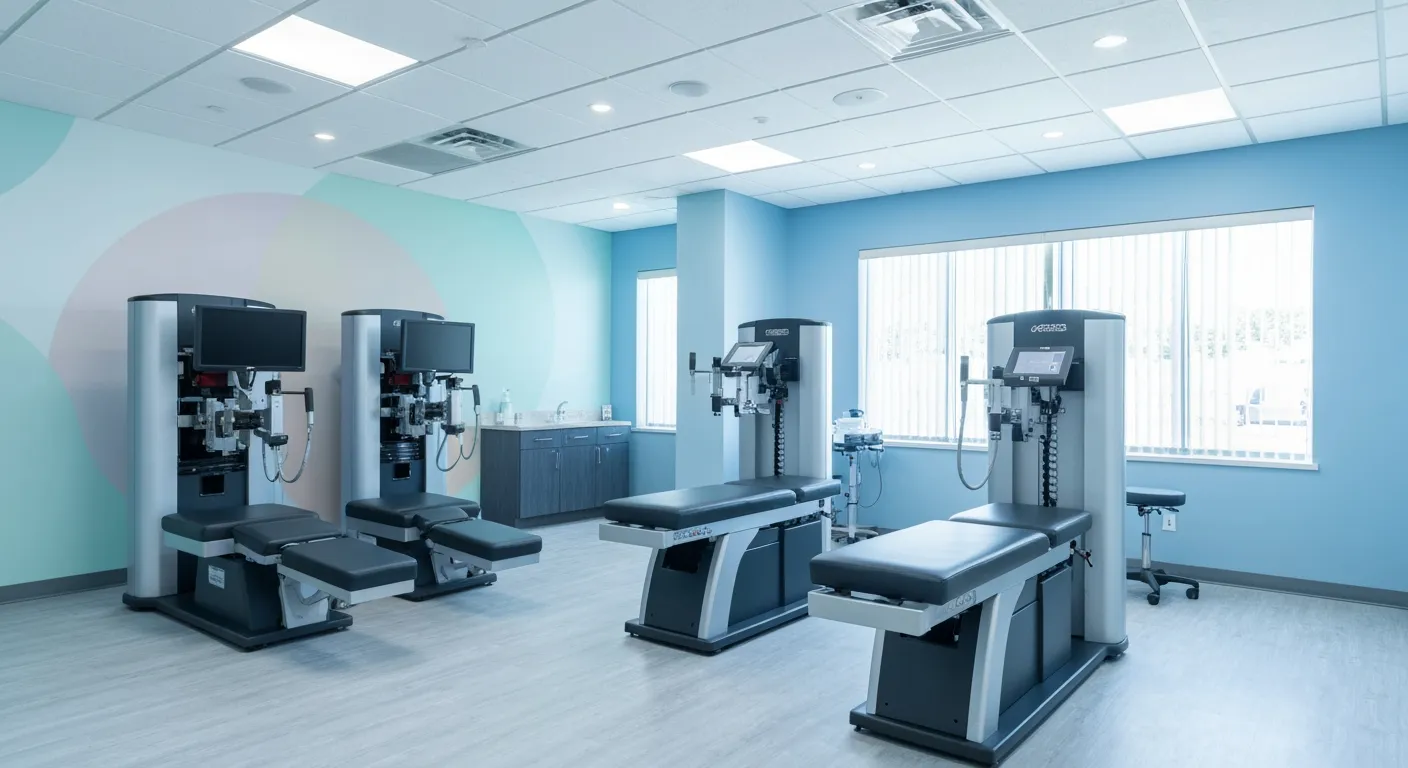
Spinal Decompression Therapy: A Non-Invasive Approach to Sciatica Relief

Exploring Holistic Approaches Beyond Surgery for Pain Relief

Practical Lifestyle Advice to Support a Healthy Spine Every Day

Corrective Exercise Routines Designed for Long-Term Pain Prevention

Real Patient Stories: Overcoming Chronic Pain with Chiropractic Care

Lifestyle Changes That Promote a Healthy Spine and Prevent Injury

How Addressing the Root Cause of Pain Leads to Lasting Relief

Non-Surgical Holistic Therapies to Manage Chronic Pain Effectively

Nutritional Counseling's Impact on Physical Health and Healing

Benefits of Regular Chiropractic Care for a Stronger Back

Your First Chiropractic Visit: What to Expect and How to Prepare

Patient Experiences: How Chiropractic Care Transformed Their Lives
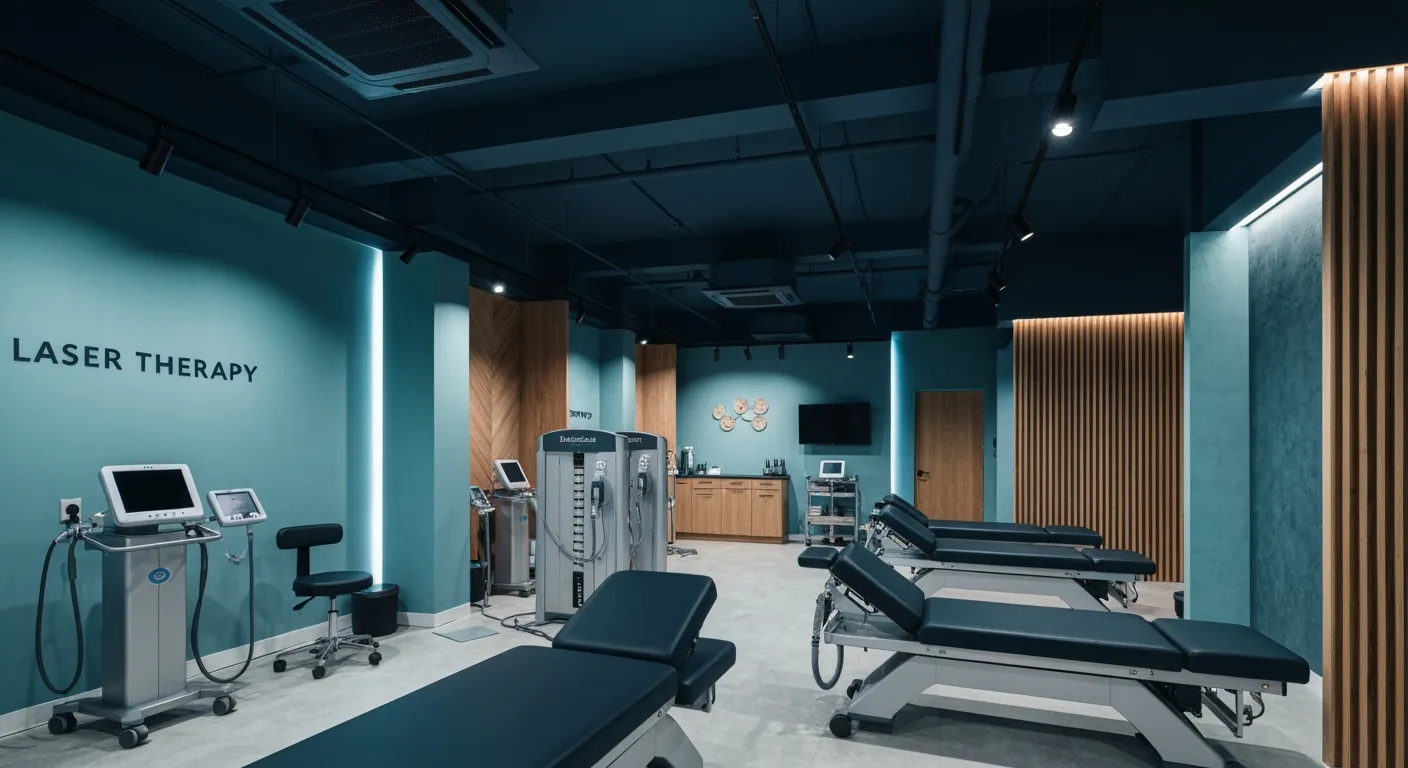
Exploring Holistic, Non-Surgical Options for Pain Management

Combining Physiotherapy with Chiropractic Treatments for Enhanced Recovery

Holistic Treatments That Offer Alternatives to Surgery for Pain Relief

Corrective Exercise Strategies for Long-Term Spine Health

How Physiotherapy Complements Chiropractic Adjustments for Better Outcomes

First-Time Chiropractic Visitors: What You Should Know

Understanding the Importance of Treating Pain at Its Source

Adopting Lifestyle Changes to Support Your Spine's Wellness

Utilizing Physiotherapy to Enhance Chiropractic Treatment Outcomes

The Key Advantages of Chiropractic Care for Back Pain Sufferers

Why Focusing on Root Causes Improves Pain Treatment Success

Corrective Exercises That Promote Lasting Pain Relief and Mobility

Sciatica Relief Through Targeted Spinal Decompression Techniques

Preparing for Your First Chiropractic Appointment with Confidence

Healthy Lifestyle Habits for Maintaining Spinal Alignment

Success Stories Highlighting Chiropractic's Role in Pain Recovery

Top Benefits of Chiropractic Care for Chronic Back Pain

Nutrition Tips to Boost Your Overall Wellness and Recovery

How Chiropractic Care Alleviates Back Pain Naturally

